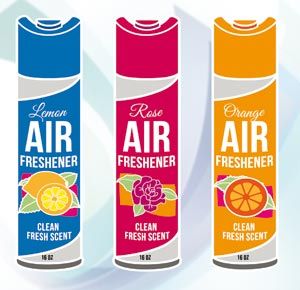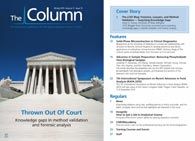Improving Sanitation with the Help of GC–MS
As part of a wider project funded by the Bill & Melinda Gates Foundation to develop sustainable next-generation toilets for lower-income countries (the “Reinvent the Toilet Challenge”), researchers have applied gas chromatography–mass spectrometry (GC–MS) to profile the malodour compounds in the headspace of latrines in Africa and India.
Photo Credit: Kathy Konkle/Getty Images

In lower-income countries there is a lack of sanitary toilet facilities, resulting in the contamination of open water sources with human waste. One of the issues reported is that the available toilet systems are poorly maintained and smell, meaning that people often avoid them altogether. As part of a wider project funded by the Bill & Melinda Gates Foundation to develop sustainable next-generation toilets for lower-income countries (the “Reinvent the Toilet Challenge”), researchers have applied gas chromatography–mass spectrometry (GC–MS) to profile the malodour compounds in the headspace of latrines in Africa and India.
It is estimated that around 2.5 billion people worldwide do not have access to clean sanitation facilities, which means that sewage is poorly controlled and can enter the environment, encouraging the spread of disease. One of the issues with toilet facilities that discourages people from using them can be malodours. Researchers from the perfume and flavours company Firmenich (Geneva, Switzerland) profiled the headspace around latrines in Africa and India to identify compounds responsible with the aim of eliminating them with future designs.
Corresponding author Christian Starkenmann told The Column: “The Bill & Melinda Gates Foundation try to help developing countries to have a decent sanitations facilities. But who wants to build latrines and maintain them for free? Therefore they would like to design a long-term business model. One possible aspect of this business model is to have people pay when they go to the toilets. These toilets must be nice and clean. If the toilet is nice and clean but stinks, what is the point to pay to use them?”
Because odourant molecules are at low concentrations in the gaseous phase, the team developed a method with two sample concentration steps. The first step was to accumulate volatiles in buffered water and then load onto a solid-phase extraction cartridge in the field for subsequent extraction and analysis of analytes back in the laboratory using GC–MS with olfactory detection (GC–MS–O). The aim was to detect analytes of interest - hydrogen sulphide, methyl mercaptan, butyric acid, p-cresole, indole, and skatole - at levels below the odour detection threshold (ODT). The method was then applied to analyze the headspace samples taken from pit latrines in Ahmadabad, India; Nairobi, Kenya; and Durban, South Africa.
According to Starkenmann, many available sensors just give an indication of compound concentrations, while the human nose is much more sensitive. He said: “Many sensors are available on the market but they just give a rough idea of the concentration of critical odourant compounds. For example they cannot differentiate between methyl mercaptan, which smells of sewage, with a very low odour threshold, compared to hydrogen sulphide, which smells of rotten eggs. This method will be very useful for people who try to understand the concentration critical odourant in the headspace at very low level.” - B.D.
Reference
1. C.J.F. Chappuis, Yvan Niclass, C. Vuilleumier, and C. Starkenmann, Environmental Science and Technology49, 6134-6140 (2015).

Regulatory Deadlines and Supply Chain Challenges Take Center Stage in Nitrosamine Discussion
April 10th 2025During an LCGC International peer exchange, Aloka Srinivasan, Mayank Bhanti, and Amber Burch discussed the regulatory deadlines and supply chain challenges that come with nitrosamine analysis.










